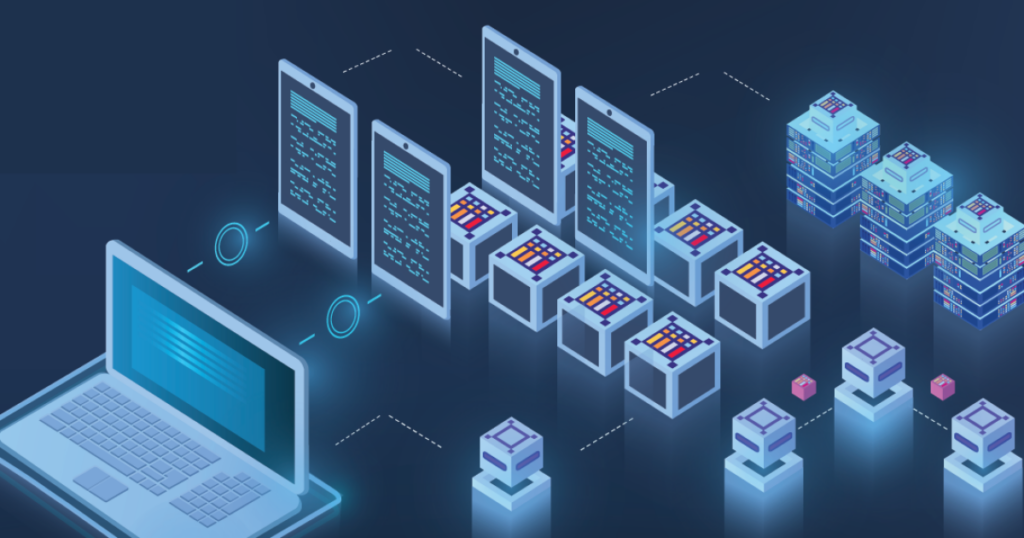
Blockchain technology has evolved through several stages since its inception with Bitcoin (Blockchain 1.0). Each iteration has introduced new capabilities and addressed limitations of its predecessors. Blockchain 4.0 represents the latest stage in this evolution, promising to bring significant advancements to Web 3.0. This article explores these advancements, supported by statistics and real-world examples.
Understanding Blockchain 4.0
Blockchain 4.0 is characterized by its focus on enterprise-level applications and the integration of advanced technologies such as artificial intelligence (AI), the Internet of Things (IoT), and improved interoperability. This generation aims to solve scalability, privacy, and usability issues that have hindered the broader adoption of blockchain in previous iterations.
Key Features of Blockchain 4.0
- Enhanced Scalability:
- Layer 2 Solutions: Technologies like Lightning Network (Bitcoin) and Plasma (Ethereum) have paved the way for significant improvements in transaction throughput.
- Sharding: Blockchain 4.0 implements sharding, which divides the blockchain into smaller, more manageable pieces, allowing parallel processing of transactions. For example, Zilliqa claims to handle up to 2,828 transactions per second (TPS) using sharding, compared to Ethereum’s current 30 TPS.
- Interoperability:
- Cross-Chain Communication: Blockchain 4.0 focuses on seamless communication between different blockchains. Projects like Polkadot and Cosmos are leading the way, enabling data and asset transfers across various blockchains without intermediaries.
- Standardization: Protocols and standards such as ERC-20 for tokens and ERC-721 for NFTs ensure compatibility and interoperability across platforms.
- Privacy and Security:
- Zero-Knowledge Proofs: Technologies like zk-SNARKs (Zero-Knowledge Succinct Non-Interactive Argument of Knowledge) and zk-Rollups enhance privacy by allowing transactions to be verified without revealing the transaction details.
- Confidential Computing: Integrating secure hardware enclaves ensures that data remains encrypted and secure during processing.
- Smart Contract Enhancements:
- Formal Verification: This technique mathematically proves the correctness of smart contracts, reducing the risk of bugs and vulnerabilities.
- Advanced Contract Models: Languages and frameworks like Solidity, Vyper, and DAML facilitate the development of complex and secure smart contracts.
Impact on Web 3.0
- Decentralized Applications (DApps):
- Scalability and Performance: With Blockchain 4.0, DApps can achieve higher throughput and lower latency, making them more viable for mainstream applications. For instance, Ethereum 2.0 aims to process up to 100,000 TPS, significantly enhancing user experience.
- Interoperability: Users can seamlessly interact with multiple DApps across different blockchains. This opens up new possibilities for composite applications, where a single user action can trigger responses across various DApps.
- Decentralized Finance (DeFi):
- Enhanced Security: Improved smart contract security reduces the risk of hacks and exploits, which have plagued the DeFi sector. In 2021, DeFi hacks resulted in over $1.3 billion in losses; Blockchain 4.0 aims to mitigate such risks.
- Interoperability in DeFi: Cross-chain capabilities enable users to leverage assets and liquidity across different platforms. For example, a user could use Bitcoin on the Ethereum network without wrapping it into an ERC-20 token.
- Non-Fungible Tokens (NFTs):
- Scalability: The NFT market saw exponential growth in 2021, with sales reaching $24.9 billion. However, high gas fees and slow transaction speeds have been barriers. Blockchain 4.0’s scalability solutions address these issues, making minting and trading NFTs more efficient.
- Interoperability: Cross-chain NFT platforms allow NFTs to be bought, sold, and traded across different blockchains, enhancing liquidity and accessibility.
- Enterprise Adoption:
- Efficiency and Cost Reduction: Blockchain 4.0 reduces transaction costs and improves efficiency. According to a report by Accenture, blockchain technology can reduce infrastructure costs for financial institutions by up to 30%.
- Supply Chain Management: Advanced blockchain solutions enable real-time tracking and verification of goods, enhancing transparency and reducing fraud. IBM’s Food Trust blockchain is an example, reducing the time needed to trace food from days to seconds.
- Data Privacy and Ownership:
- User Control: Blockchain 4.0 enhances data privacy, giving users more control over their personal information. Projects like Ocean Protocol enable users to share data while maintaining ownership and privacy.
- Decentralized Identity: Blockchain-based identity solutions, like those being developed by Microsoft’s ION, offer secure and self-sovereign identity management.
Challenges and Future Prospects
Despite its advancements, Blockchain 4.0 faces challenges such as regulatory uncertainty, technological complexity, and the need for widespread education and adoption. However, the ongoing research and development in this field indicate a promising future.
Blockchain 4.0 represents a significant leap forward, addressing many limitations of its predecessors and unlocking new possibilities for Web 3.0. Its advancements in scalability, interoperability, security, and smart contract functionality promise to transform industries and pave the way for a more decentralized, efficient, and secure internet. As we continue to explore and adopt these technologies, the potential for innovation and growth in the Web 3.0 ecosystem is boundless.